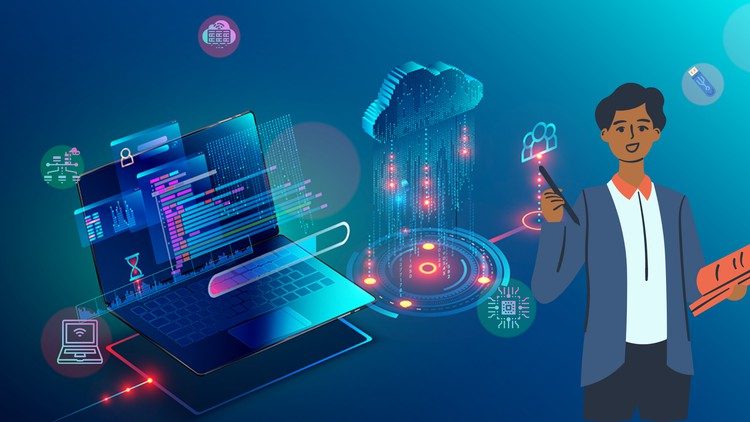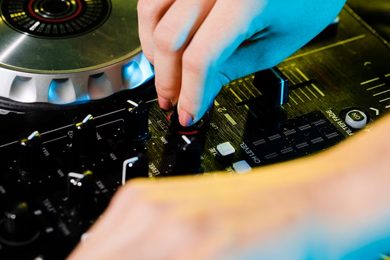This plan includes
- Limited free courses access
- Play & Pause Course Videos
- Video Recorded Lectures
- Learn on Mobile/PC/Tablet
- Quizzes and Real Projects
- Lifetime Course Certificate
- Email & Chat Support
What you'll learn?
- What is an Embedded System?
- What is an embedded systems engineer?
- The core skill set of an embedded systems engineer
- Embedded Systems Engineer Career Path
- Embedded Systems Engineer Degrees and Certifications
- Program microcontrollers with C programming language
- Make a user friendly program
- Trace errors in your Code easily and effectively
- Program in Embedded C
- Make PCB Design and Fabrication
- Learn C# Fundamentals by Coding
- Turn 2D Sketches into 3D Models
- Master 3D Design
- Program STM32 - 32-bit ARM-Based Microcontroller
- How to Set Up an Electronics Home Lab Tools and Equipment
- How to Solder Electronic Components Like A Professional
Course Overview
Pre-requisites
- A Computer
- Download the provided software which is free and included
Target Audience
- This course is meant for individuals who wants to become Embedded Systems Engineers
- Anyone want's to learn basics of C programming to get started with programming Microcontrollers
- Anyone want's to learn how to Program in Embedded C
- Anyone want's to learn how to Make PCB Design and Fabrication
- Anyone want's to learn how to Learn C# Fundamentals by Coding
- Anyone want's to learn how to Turn 2D Sketches into 3D Models
- Anyone want's to learn how to Master 3D Design
- Anyone want's to learn how to Program STM32 - 32-bit ARM-Based Microcontroller
- Anyone want's to learn How to Set Up an Electronics Home Lab Tools and Equipment
- Anyone want's to learn How to Solder Electronic Components Like A Professional
Curriculum 112 Lectures 10:06:49
Section 1 : Section 1
- Lecture 2 :
- Core Skills of an Embedded Systems Engineer
- Lecture 3 :
- Embedded Systems Engineering Degrees and Certificates
- Lecture 4 :
- Compilation Process and Your First C Project
- Lecture 5 :
- How to increase the font size in the Programming enviroment
- Lecture 6 :
- Why C and Basic Program Structure
- Lecture 7 :
- What is an embedded Systems Engineer
- Lecture 8 :
- Overivew and The software to be used
- Lecture 9 :
- What is Embedded Systems
- Lecture 10 :
- Variables
Section 2 : Section 2
- Lecture 1 :
- Statements and Operators
- Lecture 2 :
- Conditions if and switch
- Lecture 3 :
- What is Ultiboard and Why you should use it
- Lecture 4 :
- Download and Install Multisim and Ultiboard
- Lecture 5 :
- LOOP Statements
- Lecture 6 :
- Numbering System
- Lecture 7 :
- Using Functions
- Lecture 8 :
- Using Operators
- Lecture 9 :
- Digital inputs and Delay loops
- Lecture 10 :
- Multisim User Interface Explained
Section 3 : Section 3
- Lecture 1 :
- Create a Schematic for Arduino UNO Shield
- Lecture 2 :
- Arduino Boards Templates for Multisim
- Lecture 3 :
- Led Controller Circuit Schematic and PCB Design
- Lecture 4 :
- Drawing a Simple Schematic
- Lecture 5 :
- Create your first PCB Design
- Lecture 6 :
- Create a PCB fpr Arduino UNO Shield
- Lecture 7 :
- Multisim Templates for Custom Arduino Shields
- Lecture 8 :
- Create PIC Microcontroller Breakout Board Schematic
- Lecture 9 :
- Create PIC Microcontroller Breakout Board PCB
- Lecture 10 :
- download and install
Section 4 : Section 4
- Lecture 1 :
- Operators
- Lecture 2 :
- example my age
- Lecture 3 :
- Basic Input and Output using Console Methods
- Lecture 4 :
- Create Your First App
- Lecture 5 :
- Coding Your First App
- Lecture 6 :
- String Args Part1
- Lecture 7 :
- Syntax Basics
- Lecture 8 :
- Data Types
- Lecture 9 :
- Type Conversion
- Lecture 10 :
- Operator Example
Section 5 : Section 5
- Lecture 1 :
- While and do While Loops
- Lecture 2 :
- For Loop
- Lecture 3 :
- If else and nested if statements
- Lecture 4 :
- SolidWorks Components - Parts Asseblies Drawings
- Lecture 5 :
- Let s Begin Starting SolidWorks
- Lecture 6 :
- SolidWork Explorer Tab Explained
- Lecture 7 :
- SolidWork Toolbars Explained
- Lecture 8 :
- SolidWork Exercise
- Lecture 9 :
- Decision Making using If statement
- Lecture 10 :
- SwitchCase
Section 6 : Section 6
- Lecture 1 :
- Handfull Shortcuts
- Lecture 2 :
- 3D Views Tab
- Lecture 3 :
- Create a sketch for Arduino Mega
- Lecture 4 :
- Introduction
- Lecture 5 :
- Things You Must Know
- Lecture 6 :
- Pinout Configuration
- Lecture 7 :
- Creating the 3D Body for Arduino Mega
- Lecture 8 :
- Add Arduino Mega 3D Model
- Lecture 9 :
- Finishing the Board
- Lecture 10 :
- STM32CubeMx MCU Selector
Section 7 : Section 7
- Lecture 1 :
- The World of STM
- Lecture 2 :
- Key Features
- Lecture 3 :
- Peripherals and Middleware configuration
- Lecture 4 :
- Applications
- Lecture 5 :
- NUCLEO Development Boards
- Lecture 6 :
- STM32 Development Board
- Lecture 7 :
- ARM Coretx M4 Architecture
- Lecture 8 :
- Introduction to ARM World
- Lecture 9 :
- ARM Cortex M4 Memory Map
- Lecture 10 :
- Introduction to ARM Coretx
Section 8 : Section 8
- Lecture 1 :
- What is CMSIS
- Lecture 2 :
- Configure Arduino IDE to Program STM32 Boards
- Lecture 3 :
- Control Registers in STM32
- Lecture 4 :
- Download and Install STM32CubeMx
- Lecture 5 :
- Some of the GPIO Registers in STM32
- Lecture 6 :
- STM32 ARM Naming
- Lecture 7 :
- STM32 Pinout
- Lecture 8 :
- Uploading Your First Code Part2
- Lecture 9 :
- Introduction
- Lecture 10 :
- The Right Location
Section 9 : Section 9
- Lecture 1 :
- Soldering Station
- Lecture 2 :
- Soldering Accessories
- Lecture 3 :
- An Oscilloscope
- Lecture 4 :
- Wire Stripper
- Lecture 5 :
- Hot Glue Gun
- Lecture 6 :
- Tweezers
- Lecture 7 :
- Multimeter
- Lecture 8 :
- Bench Power Supply
- Lecture 9 :
- Needle-nose Pliers and Wire Cutter
- Lecture 10 :
- Precision Screwdriver Set
Section 10 : Section 10
- Lecture 1 :
- Rotary Tool and Accessories
- Lecture 2 :
- Breadboards and Jumper Wires
- Lecture 3 :
- Electronics Components
- Lecture 4 :
- Varied Sensors and Modules
- Lecture 5 :
- 3D Printer
- Lecture 6 :
- Assortment Kits and Electronics Components
- Lecture 7 :
- Arduino Starter Kit
- Lecture 8 :
- Cabinet organizer
- Lecture 9 :
- 22 How to Buy Electronic Lab Components From Aliexpress
- Lecture 10 :
- How to Buy Electronic Lab Components From Amazon
Section 11 : Section 11
- Lecture 1 :
- Course Contents
- Lecture 2 :
- Cleaning Your Soldering Iron
- Lecture 3 :
- How to Buy Electronic Lab Components From Ebay
- Lecture 4 :
- Soldering Accessories
- Lecture 5 :
- Step Three Soldering
- Lecture 6 :
- Examples of Bad Soldering
- Lecture 7 :
- Let_s Try Soldering
- Lecture 8 :
- Important tip when soldering Electronic Componenets into PCB Boards
- Lecture 9 :
- Things to Consider when Choosing Soldering Irons
- Lecture 10 :
- Step One Preperation
- Lecture 11 :
- Step Two Tinning
- Lecture 12 :
- Tips and Tricks
Our learners work at
Frequently Asked Questions
How do i access the course after purchase?
It's simple. When you sign up, you'll immediately have unlimited viewing of thousands of expert courses, paths to guide your learning, tools to measure your skills and hands-on resources like exercise files. There’s no limit on what you can learn and you can cancel at any time.Are these video based online self-learning courses?
Yes. All of the courses comes with online video based lectures created by certified instructors. Instructors have crafted these courses with a blend of high quality interactive videos, lectures, quizzes & real world projects to give you an indepth knowledge about the topic.Can i play & pause the course as per my convenience?
Yes absolutely & thats one of the advantage of self-paced courses. You can anytime pause or resume the course & come back & forth from one lecture to another lecture, play the videos mulitple times & so on.How do i contact the instructor for any doubts or questions?
Most of these courses have general questions & answers already covered within the course lectures. However, if you need any further help from the instructor, you can use the inbuilt Chat with Instructor option to send a message to an instructor & they will reply you within 24 hours. You can ask as many questions as you want.Do i need a pc to access the course or can i do it on mobile & tablet as well?
Brilliant question? Isn't it? You can access the courses on any device like PC, Mobile, Tablet & even on a smart tv. For mobile & a tablet you can download the Learnfly android or an iOS app. If mobile app is not available in your country, you can access the course directly by visting our website, its fully mobile friendly.Do i get any certificate for the courses?
Yes. Once you complete any course on our platform along with provided assessments by the instructor, you will be eligble to get certificate of course completion.
For how long can i access my course on the platform?
You require an active subscription to access courses on our platform. If your subscription is active, you can access any course on our platform with no restrictions.Is there any free trial?
Currently, we do not offer any free trial.Can i cancel anytime?
Yes, you can cancel your subscription at any time. Your subscription will auto-renew until you cancel, but why would you want to?
Instructor

12883 Course Views
124 Courses



 Tech & IT
Tech & IT
 Business
Business
 Coding & Developer
Coding & Developer
 Finance & Accounting
Finance & Accounting
 Academics
Academics
 Office Applications
Office Applications
 Art & Design
Art & Design
 Marketing
Marketing
 Health & Wellness
Health & Wellness
 Sounds & Music
Sounds & Music
 Lifestyle
Lifestyle
 Photography
Photography





















